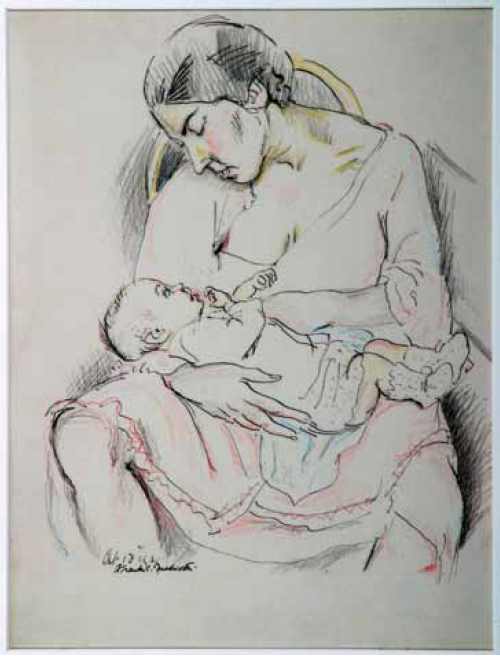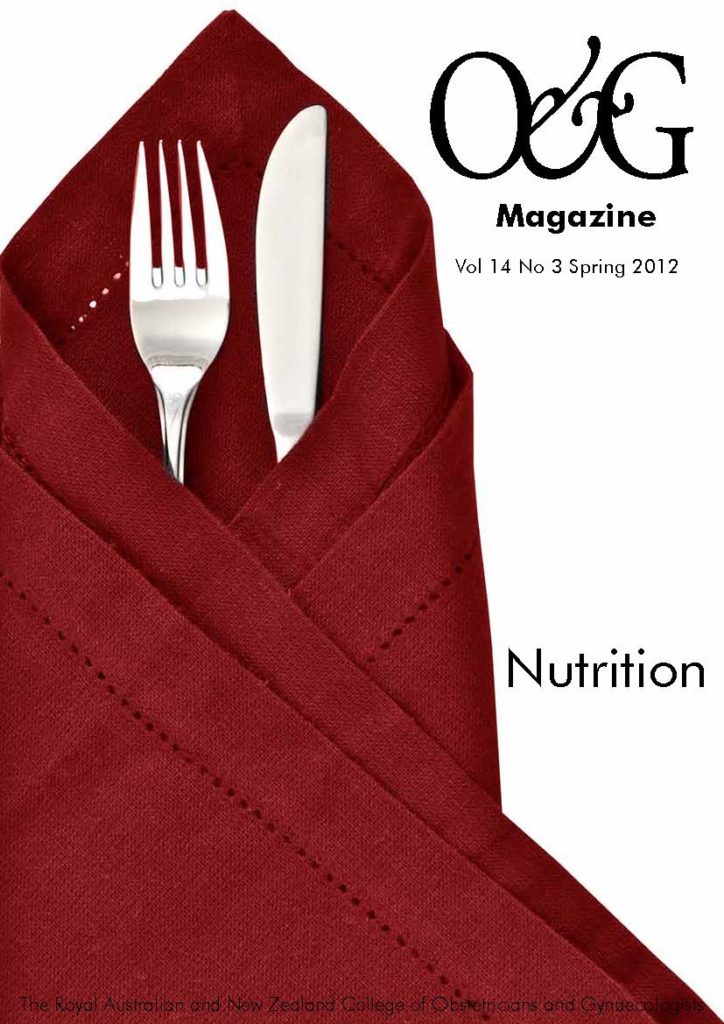Breastmilk, breastfeeding and optimal nutrition: nutrition is only half the story.
Breastmilk is species-specific, living, biodynamic and synergistic. Biodynamic because breastmilk varies from woman to woman, by gestational age of the infant, from day to night, from the beginning to the end of the breastfeed and also changes flavour depending on what the mother eats. Vanilla, garlic and carrot have been described as discernible taste sensations in breastmilk and some research suggests that these flavour changes are significantly important as primers for infants when they start to eat other foods.1 Another significant aspect of breastfeeding described by Ball and Klingaman is that humans are, ‘a low solute, frequent suckling species,’ which explains why breastfeeding works best when mothers sensitively respond to infant cues for feeding.2 Based on evidence evaluated by the World Health Organisation, breastfeeding is recommended for around six months at which point developmentally ready infants should be offered appropriate complementary foods. As pointed out by epidemiologist Adriano Cattaneo,3 developmental readiness for solid food has a distribution range like any other biological variable, a bell-shaped curve that has a mode at six months and is skewed to the right, which means more infants are ready after than before six months. It is recommended that breastfeeding continues after solid foods are started for up to two years and then beyond if the mother wishes to continue.4
Breastfeeding has established itself within research as the optimal method of feeding babies. The American Academy of Pediatrics (AAP) first released a policy statement on breastfeeding and the use of human milk in 19975 that was revised in 2005, owing to ‘significant advances in science and clinical medicine.’6 In 2012, an updated policy was released stating that ‘recently published research and systematic reviews have reinforced the conclusion that breastfeeding and human milk are the reference normative standards for infant feeding and nutrition.’7
The AAP statements identify health, nutritional, immunologic, developmental, psychological, social, economic and environmental advantages to breastfeeding. The protective effects of breastmilk against sudden infant death syndrome (SIDS), insulin-dependent diabetes mellitus, allergic diseases, Crohn’s disease, ulcerative colitis and other chronic digestive diseases are recognised. Research also shows strong evidence that breastmilk feeding decreases the incidence and severity of diarrhoea, lower respiratory tract infection, otitis media, bacteraemia, bacterial meningitis, botulism, urinary tract infection, necrotising enterocolitis and late-onset sepsis in preterm infants. There are also significant health advantages for mothers that become more robust with increased breastfeeding duration.
Half a story – optimal nutrition
Breastfeeding provides optimal nutrition to the human infant. Milk from a human mother contains a wide range of nutrients and also hormones such as ghrelin, a metabolic modifier that assists with the coordination of food intake, energy expenditure and nutrient utilisation.8 The carbohydrates in human milk include lactose and oligosaccharides as major components. Oligosaccharides may provide a good source of energy for infants. Milk production and the gross composition of breastmilk are largely independent of maternal diet and there is little variation between population groups in amounts of milk produced.9
The average calorie content of human milk is 22kcal/30ml, but this varies not only throughout each feed, but also changes depending on the time of day. The fat range is 22.3–61.6g per litre, independent of breastfeeding frequency.10 It is, however, not the amount of fat in the breastmilk that correlates with infant growth, but the volume of breastmilk intake.11 As Goldman pointed out in 2000, ‘the notion that human milk supplies only nutrients to the infant was still in vogue four decades ago’12, which is why there is another half of the story.

Only 35 per cent of the world’s infants are as lucky as this little one. Frank Medworth Mother and Child II, 1929 (Mother feeding baby) Ink and colour pencil. The drawing depicts the artist’s wife, Muriel, and daughter, Diana. Inscribed with date Oct 17 1929. From the RANZCOG Historical Collections. Purchased with Funds from the Friends of the College Collection, 2003.
The other half of the story
A large part of human milk is unable to be digested by the infant and serves an entirely different purpose to nutrition. Human milk has been described as an ‘astonishing product of evolution’13 shaped by natural selection and designed to ensure to the maximum extent possible the survival of the mother and her infant. Akre points out that ‘200 million years or so of mammalian evolution should be worth something in terms of our default position being intrinsically weighted in favour of breastfeeding.’14
There are many components of breastmilk designed for infant defence against infection, including large amounts of Secretory IgA antibodies that migrate from the mother’s gut to her breasts. Oligosaccharides are thought to provide a food source for a healthy microbiome and they may also attach themselves to viruses and other pathogens and safely take them out of the infant’s system. Oligosaccharides have been described as ‘130 reasons to breastfeed’15 and not only do they stimulate an increase in the number of good gut bacteria in breastfed babies and a significant decrease in the number of potentially bad bacteria, but they are also important for brain development, nerve transmission, memory formation, cell-to-cell communication and resistance to infection.
The immune system of human milk provides a continuum of the maternal immune protection that extends from the transfer of immunoglobulin G (IgG) from the mother via the placenta to the infant in utero, and then from the mother via breastfeeding and breastmilk to the infant after birth.16 Cregan et al, describe how this continuum of support for the immature human infant/child unfolds with a new mother’s mammary glands taking over from the placenta to provide developmental guidance.17 Breastfeeding actively stimulates the infant’s immature immune system and modulates development; studies have found that the thymus gland of an exclusively breastfed infant is twice the size of a non-breastfed infant.18
The complex components of human milk are irreproducible and include lactoferrin, a single polypeptide chain glycoprotein that forms two lobes, both of which bind iron.19 Lactoferrin is quite resistant to degradation in the gut and the stools and urine from a breastfed baby contains significant amounts of lactoferrin, including large fragments. Special receptors in the baby’s gut uptake lactoferrin and these large lactoferrin fragments. Lactoferrin is bactericidal for many gram negative and gram positive bacteria and also has antiviral and antifungal properties. Lactoferrin destroys microbes without inducing tissue engagement and inflammatory responses and prevents production of several pro-inflammatory cytokines.19 It is thought that lactoferrin protects breastfed babies against urinary tract and bowel infections.
A happy ending to the story?
The breastfeeding and breastmilk information just presented remains only a fraction of a much bigger and remarkable true story. Despite all the accumulating evidence that clearly shows the risks of not breastfeeding, only 35 per cent of the world’s infant population are exclusively breastfed at three months of age. It is critical that all health professionals incorporate actions that protect, promote and support breastfeeding into their everyday work. Alongside this some system changes are also essential to enable women to establish breastfeeding, breastfeed for longer and avoid breast-milk substitutes. These include support for the Baby Friendly Hospital and Community Initiatives, longer paid parental leave, family- and breastfeeding-friendly workplaces and some meaningful regulation of the infant formula industry to reduce or preferably eliminate aggressive marketing and misleading health claims. The loss of breastfeeding has significant negative implications and as a researcher recently stated, ‘…every component of [human] milk probably has a special role. It’s all there for a purpose though we’re still figuring out what that purpose is, so for God’s sake, please breastfeed.’13
References
- Mennella JA, Jagnow CP, Beauchamp GK. Prenatal and postnatal flavour learning by human infants. Pediatrics. 2001;107(6): p E88.
- Ball H, & Klingaman K. Breastfeeding and mother-infant sleep proximity. In: Trevathan WR, Smith EO, McKenna JJ, editors. Evolutionary Medicine & Health. New York, Oxford: Oxford University Press; p 226-241;2008.
- Cattaneo A. Not so good. BMJ Rapid Response 16.1.11 to Fewtrell M, Wilson DC, Booth I, Parsons L, Lucas A. Six months of exclusive breastfeeding: How good is the evidence? BMJ 2011;342:c5955
- World Health Organisation/UNICEF. Global Strategy for Infant and Young Child Feeding. Geneva; 2003.
- American Academy of Pediatrics. A policy statement: Breastfeeding and the use of human milk. Pediatrics. 1995;100(6): p 1035-1039.
- American Academy of Pediatrics. A policy statement: Breastfeeding and the use of human milk. Pediatrics. 2005;115(2): p 496-506.
- American Academy of Pediatrics. A policy statement: Breastfeeding and the use of human milk, Pediatrics. 2012; 129(3): e627-e641.
- Aydin S, Ozkan Y, Komru S. Ghrelin is present in human colostrum, transitional and mature milk. Peptides. 2006; (27): p 878-882.
- Kent JC. How breastfeeding works. Journal of Midwifery & Women’s Health. 2007; 52, (6): p 564-570.
- Mitoulas LR, Kent JC, Cox DB, Owens RA, Sherriff JL, Hartmann PE.Variation in fat, lactose and protein in human milk over 24h and throughout the first year of lactation. British Journal of Nutrition, 2002; 88(1): p 29-37.
- Kent JC, Mitoulos LR, Cregan MD, Ramsay DT, Doherty DA, Hartmann PE. Volume and frequency of breastfeedings and fat content of breast milk throughout the day. Pediatrics, 2006; 117, (3): e387-e395.
- Goldman AS. Modulation of the gastrointestinal tract of infants by human milk: Interfaces and interactions: An evolutionary perspective. American Society for nutritional science symposium: Bioactivity in milk and bacterial interactions in the developing immature intestine. 2000; p 426S-431S.
- Wade N. Breast milk sugars give infants a protective coat. 2010 http://www.nytimes.com/2010/08/03/science/03milk.html?_r=2 .
- Akre, J. From grand design to change on the ground: Going to scale with a global feeding strategy, in F. Dykes & V. H Moran, editors. Infant and Young Child Feeding: Challenges to Implementing a Global Strategy. Oxford: Wiley-Blackwell Publishing Ltd; 2009.
- Miller JB, McVeagh P. Human milk oligosaccharides: 130 reasons to breast-feed. British Journal of Nutrition. 1999; 82(5): p 333-335.
- Slusser W, Powers NG. Breastfeeding update 1: Immunology, nutrition and advocacy. Pediatrics in Review, 1997; (18): p 111-119.
- Cregan MD, Piper KME, Thomas E, Fan Y, & Berry CA. Putative stem cells in human milk. Proceedings and abstracts from The Science of Human Lactation: Foundations of Clinical Practice, International Society for Research in Human Milk and Lactation Biennial Conference, 2008, Perth, Australia.
- Hanson LA, Karotkova M. The role of breastfeeding in prevention of neonatal infection. Seminars Neonatol. 2002; (7): p 275-261.
- Hanson LA. Immunobiology of human milk: How breastfeeding protects babies. Amarillo:Pharmasoft;2004.






Leave a Reply